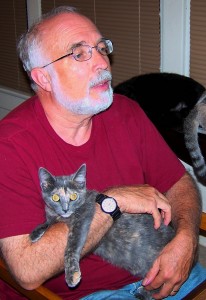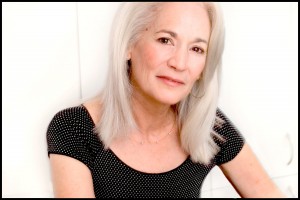By Sarah Weathersby
Thanks
so much, Anthony, for the opportunity to guest blog at your place. I’m
currently in the midst of a 10-day blog tour to promote my new novel
TELL THEM I DIED. Amazon has paperback copies listed for $8.99 and an
Amazon Kindle version for $3.99. You can find it also on
BarnesandNoble.com in NOOK version for $3.99. I need reviews to help
generate word-of-mouth buzz and interest in the book.
Amazon link
Amazon link
 TELL THEM I DIED is a romantic adventure that doesn't conform to the
usual romance novel genre in that the protagonists are all over fifty
years of age, retired, and with discretionary time and funds to enjoy
life, and online friends to share every minute. And unlike other
romances, much of the action takes place on the Internet on social
networking sites.
TELL THEM I DIED is a romantic adventure that doesn't conform to the
usual romance novel genre in that the protagonists are all over fifty
years of age, retired, and with discretionary time and funds to enjoy
life, and online friends to share every minute. And unlike other
romances, much of the action takes place on the Internet on social
networking sites. The story was inspired by the many people I came to know and love over many years on social networking sites. People who are not online a lot don't realize how real those long-distance relationships can be.
Over all those years, my online friends have married, had children, divorced, and some have died. And then there is the travel element. My husband and I travel a lot, and we share our travel photos with our friends online. Several friends have suggested that I write a book about my travels. I think travelogs can be rather boring, but I decided to weave some of our adventures into the story.
 |
| Sarah Weathersby |
I hope you’ll take the time to check out TELL THEM I DIED and write a review at Amazon.com or on your blog. It's a light-hearted page-turner of a story, that my early reviewers have said they hated to end.
My tag line: When it comes to long-distance internet romances, sixty is the new seventeen.
Here is an excerpt:
She tossed and turned another night until the talking Caller ID voice announced, “Call from Las Vegas, NV.” It annoyed Angela how the voice tried to pronounce NV, as a word and not as separate letters. She reached for the phone, not looking at the clock. Her eyes couldn’t focus on it anyway in the dark without her glasses. She knew it was Jackson.“Why did you set me up like that?” he asked.“What? Jackson? What happened?“Those two women, Bonita and Stacey. They were expecting a Good Time Charlie or something. I told them I needed to talk to the police and the mortuary. They took me on a tour of the Strip, pointing out all the casinos, telling me about the free things to see. They insisted on parking the car at Bellagio so we could go look at the fountains. When we went downtown, I thought we were going to the police, but we wound up on Freemont Street, watching the light show. I was so tired I was ready to go back to my hotel. But then they said they would take me to see Carlton. They said they knew where he lived.”“Did you see him?” Angela asked.“First they had to stop at Bonita’s house. Bonita had dinner ready and all, so I ate. Both of those women turned out to be freaks. They changed into lingerie and tried to seduce me. Finally I hollered. Just give me the boy’s address, and let me out of here.”Angela could hear his frustration, but she had to ask, “Did you get the address?”“I got the address.” Jackson said. “But first they had to call me some kind of low-life snake to take up their time and eat their food and on and on. I almost cried, please, please. They let me call a taxi, and I went out and sat on Bonita’s front steps to wait.”“I’m sorry. I had no idea. I only know those women from Blaq-Kawfee. I guess I should have known since Laura didn’t associate with them. I don’t even know what time it is. I suppose it was too late after all your running around for you to find Carlton.”Jackson said, “I know I said I wouldn’t rest until I found Laura, but after tonight I need to get some sleep. I’ll track down Carlton tomorrow.”
I am giving away four (4) autographed copies of TELL THEM I DIED through a giveaway administered by Goodreads.com. If you're not already a member of Goodreads, it's easy to join. Go here for the giveaway:
http://www.goodreads.com/giveaway/show/40065-tell-them-i-died
http://www.goodreads.com/giveaway/show/40065-tell-them-i-died
ABOUT THE AUTHOR
Sarah Gordon Weathersby is the youngest of seven siblings, and the first to migrate back to the South after living in DC, New Jersey and New York. She is a retired Information Technology professional who lives in Raleigh with her husband, and their imaginary dog, Dusty. Sarah is the author of a memoir, Motherless Child - stories from a life, and publisher of a family saga, The Gordons of Tallahassee, written by her sister LaVerne Gordon Goodridge. TELL THEM I DIED is her first work of fiction.
You can contact Sarah online at www.sarahweathersby.com
http://sarahweathersby.blogspot.com/
http://www.facebook.com/saraphen
And on Twitter @saraphen
Sarah Gordon Weathersby is the youngest of seven siblings, and the first to migrate back to the South after living in DC, New Jersey and New York. She is a retired Information Technology professional who lives in Raleigh with her husband, and their imaginary dog, Dusty. Sarah is the author of a memoir, Motherless Child - stories from a life, and publisher of a family saga, The Gordons of Tallahassee, written by her sister LaVerne Gordon Goodridge. TELL THEM I DIED is her first work of fiction.
You can contact Sarah online at www.sarahweathersby.com
http://sarahweathersby.blogspot.com/
http://www.facebook.com/saraphen
And on Twitter @saraphen
I appreciate your time and consideration, and I hope you’ll enjoy my novel. Thanks so much, Anthony and friends.





















![Reblog this post [with Zemanta]](http://img.zemanta.com/reblog_e.png?x-id=4314dfc0-4df4-4daa-98e3-2d98d9096e68)



![Reblog this post [with Zemanta]](http://img.zemanta.com/reblog_e.png?x-id=3fc95f8e-2f24-494d-8ee6-75e3cd88551b)